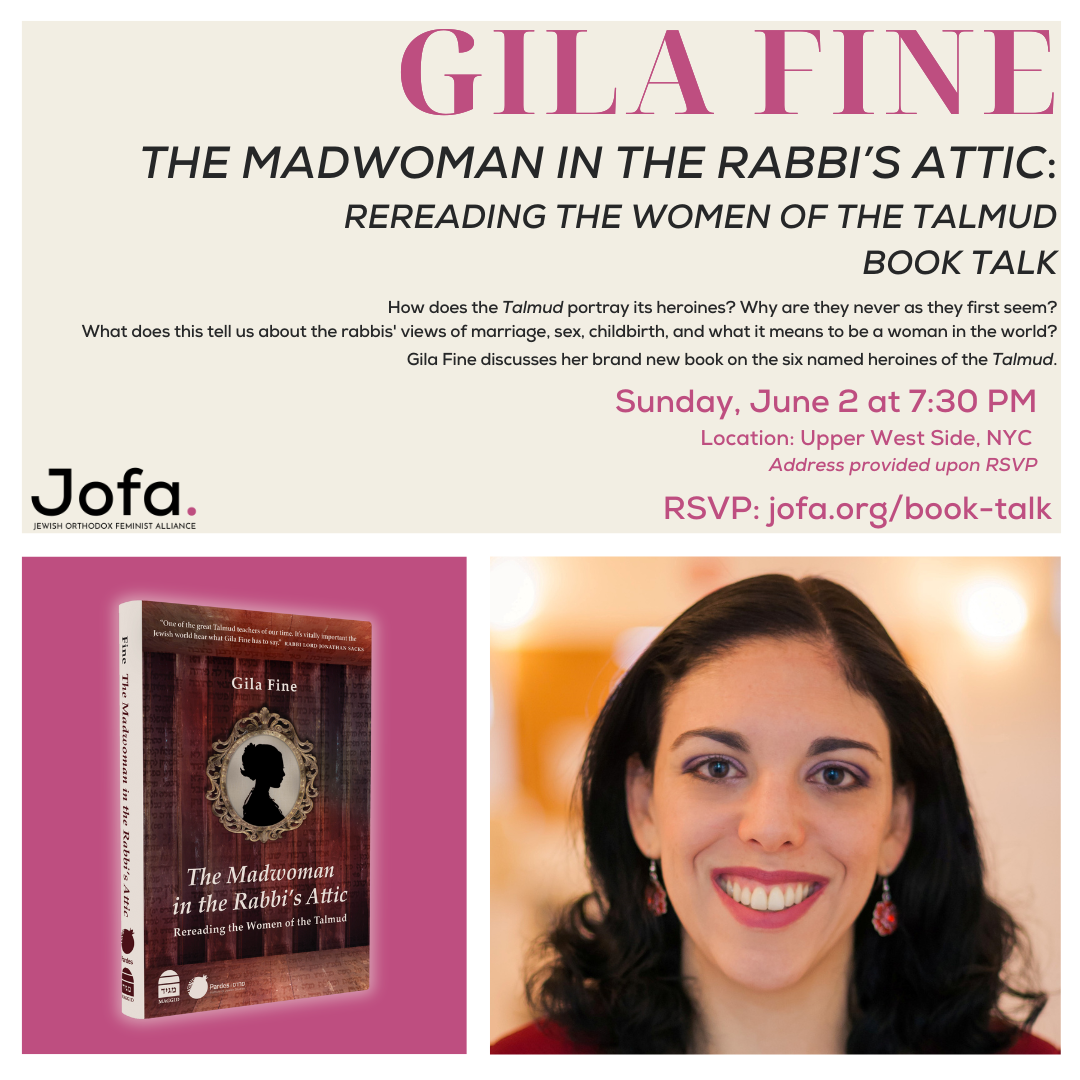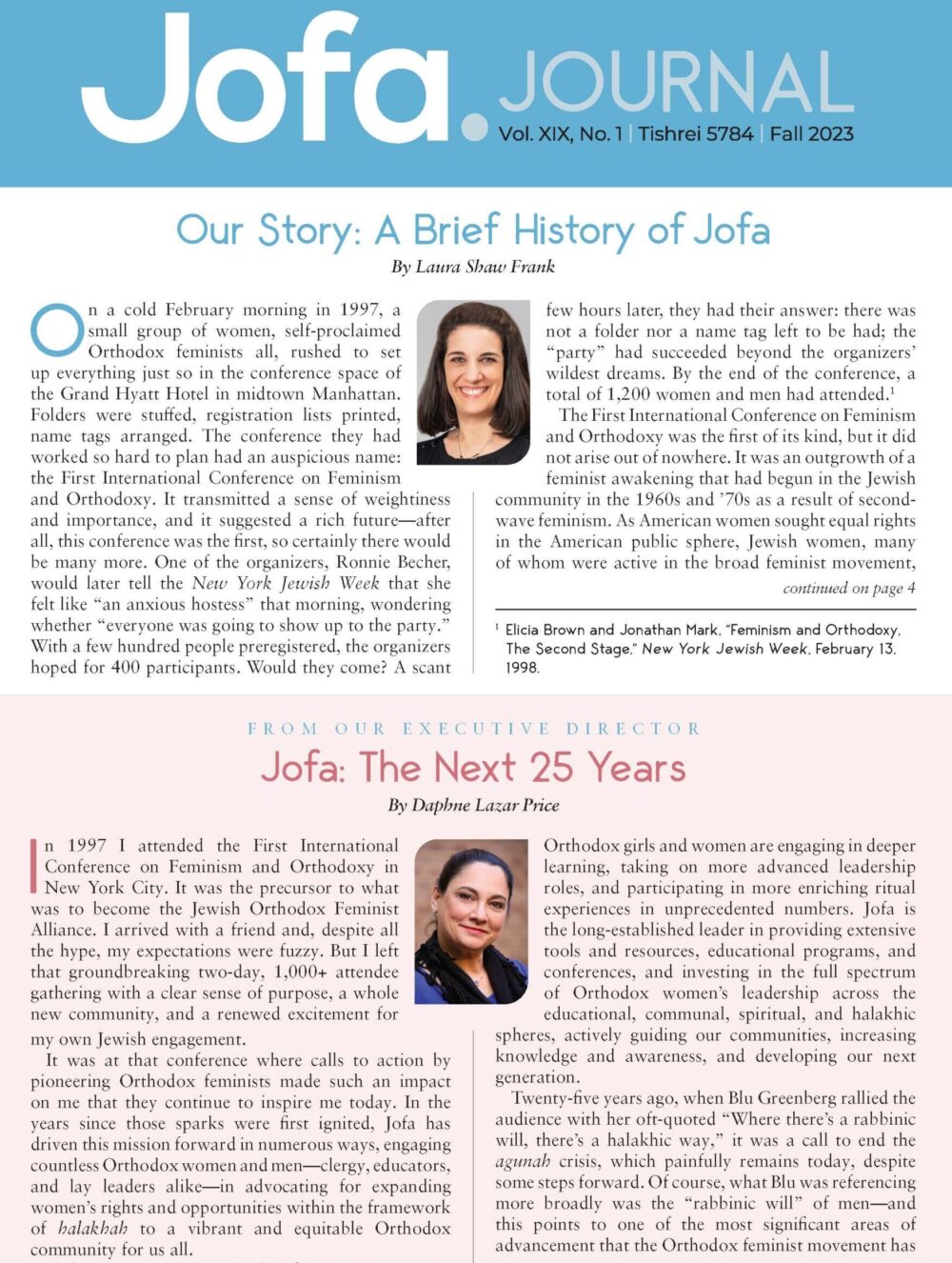By Michelle Shain
“Shabbat Morning Groups for Our Children Are Back … this Shabbat!” read the subject line of an email from my synagogue sent a few months ago, in May 2021. After more than 14 months of spending Shabbat mornings at home with my four children, the prospect of going back to shul filled me with excitement—and uncertainty. After so much time apart, how had we changed?
Losing loved ones and beholding death on a scale unseen in peacetime challenged and transformed the underpinnings of our assumptions about the world. When Orthodox Jews found themselves faced with the spiritual dilemmas of a global pandemic, what changes were wrought? At the Orthodox Union’s Center for Communal Research, we sought to address that burning question. We were particularly interested in how women had responded to the extreme disruption of their usual rhythms of home life.
Our Community Portrait Study (see research.ou.org/cps) gives a glimpse into the COVID-19 experiences of adult members of eleven Orthodox synagogues in four communities: New Rochelle and Scarsdale, New York; West Hempstead, New York; the Toco Hills neighborhood in Atlanta, Georgia; and the North Dallas area of Dallas, Texas. We did surveys at three time points during the COVID-19 pandemic, ultimately collecting data from 937 individuals, 48 percent of whom were women. Because we surveyed the same people multiple times, we learned a lot about the relationship between “staying home” (measured using Google’s Community Mobility data), religion, and mental health.
Were the people who participated in our study typical American Jews? Certainly not. They were suburban, middle-class Orthodox Jews, two-thirds of whom were college graduates and most of whom had household incomes of more than $100,000 per year. (In New Rochelle and Scarsdale, almost half had household incomes of $400,000 or more per year.) Most respondents belonged to Modern Orthodox synagogues and/or synagogues that employ a rabbi with semikhah from Yeshiva University.
Impact of the Pandemic on Religious Life
What did our study uncover about the impact of the pandemic on the religious lives of this rarefied group? Throughout the pandemic, the Orthodox Jews in our sample demonstrated a consistent, positive attitude toward God and religion. Contrary to expectations, when people were spending more hours at home, they were also more likely to report that they “find strength or comfort in religious observance” and “feel God’s love.” This was equally true of men and women.
In their own words, some women shared their unwavering confidence that God “runs the world” and “has a plan for us that we cannot possibly fathom.” It is impossible not to marvel at the faith of the woman who said, “I have more awe in things that are not visible to the eye like the virus that is affecting the world. I still think God is good and that some things that happen are not punishments.” Other women spoke of their conviction that they had a duty to help others, that they were “finding purpose in helping other people” and that “doing mitzvos will bring His raḥamim (mercy).” Very few women expressed doubt or crises of faith.
At the same time, the pandemic seems to have widened the gap between men’s and women’s synagogue attendance. Women were much less likely than men to attend in-person prayer services (i.e., minyanim) throughout the pandemic, and even as the situation improved, women’s return to the synagogue was slower than men’s. Because men had comparatively greater access to communal prayer and support, women’s spiritual resilience in the face of the pandemic is all the more remarkable.
[Insert “minyan” chart around here]
Social distancing measures changed Shabbat more than any other day of the week for Orthodox Jews. To tap into this experience, we developed a Shabbat Sentiment Scale consisting of questions about the extent to which people felt joyful, peaceful, bored, or lonely on the previous Shabbat. On average, women had less positive feelings about Shabbat than men, with sex differences being greatest among respondents younger than 40 years old.
One young mother’s comment about the experience of being home on Shabbat with her children was sharply illuminating: “It just makes Shabbos so depressing that the women are all stuck at home prisoners with screaming children while the men are all out and in shul.” The strong language in her comment alludes to a painful and palpable absence—namely, the opportunities offered by synagogue life for children to learn and play while their mothers draw on the support of prayer and friends.
What did the pandemic teach us about women’s Torah learning? When it came to learning Torah over the phone, online, or through an app, women were less likely to do so than men: 50 percent of women did so, versus 66 percent of men. The relative difference between men and women was the same when it came to learning alone or with someone in their homes, but the overall percentages were higher: 62 percent of women versus 81 percent of men. The policy implications for Jewish content creators are many, one of which is that resources to support individual or family learning may be more appealing to both women and men than are synchronous online learning opportunities.
Mental Health Implications
How did the pandemic affect Orthodox women’s mental health? It is important to note that in the general U.S. population, women are more likely than men to have a mental illness, and men are more likely than women to be dependent on or abuse alcohol and illicit drugs. It was therefore unsurprising that the women in our sample were more depressed and anxious, felt more stress, and felt lonelier than men, but were less likely than men to binge drink. Furthermore, younger women were more depressed and anxious, had higher levels of perceived stress, and felt lonelier than older women. Differences between men and women, and between older and younger women, persisted throughout our study period, suggesting that they may be unrelated to the pandemic. In other words, it may be that younger Orthodox women face more psychological challenges than others in the community even during “normal” times.
[insert “anx dep” chart around here]
Nevertheless, the proportion of Orthodox women in our sample with mild to moderate symptoms of depression and anxiety decreased as time progressed and the pandemic waned. The proportion of men with these symptoms did not change over the course of the study. Here, we run into the obstacle that the American Orthodox community had no baseline, pre-pandemic measures of mental health. Without these baseline data, we do not know what women’s improving mental health and men’s unchanging mental health mean. Were women more successful in overcoming the psychological challenges of the COVID-19 pandemic? Were women more susceptible to such difficulties in the first place? It remains an open question.
Overall, the Orthodox women in our sample fared well during the pandemic. Why? Certainly, they were protected from some of the challenges of the pandemic by being highly educated and having well-paying jobs. There’s a lesson there for women, that striving for an education so as to secure financial security is important. However, our examination of the relationship between religious faith and mental health suggests that faith in God and existential meaning were also powerful sources of comfort and support. Orthodox life offers Jewish women a lens through which they can interpret their experiences and a community that offers powerful support. During a particularly challenging year, it was heartening to discover just how meaningful, enduring, and inspiring these foundations of support were.
Dr. Michelle Shain is the assistant director of the Orthodox Union’s Center for Communal Research.
Callouts:
Because men had comparatively greater access to communal prayer and support, women’s spiritual resilience in the face of the pandemic is all the more remarkable.
Younger women were more depressed and anxious, had higher levels of perceived stress, and felt lonelier than older women.











